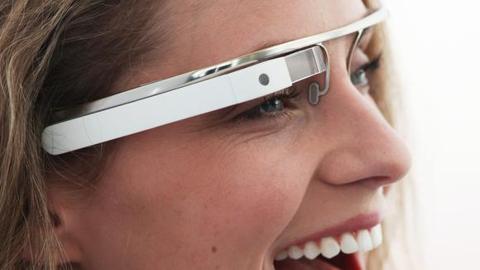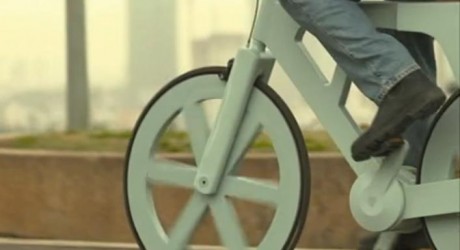(click to enlarge)

I first saw the introductory video about Google Glass sometime in the middle of 2012 and thought to myself that this may well be the next seminal innovation in the field of communication technology. When Apple (AAPL) introduced iPhone to the world in the year 2007, you did not have to be an industry guru to predict than this device is going to set the paradigms for the embryonic smartphone industry. The most commercially successful innovations in this fiercely competitive industry have not necessarily been cutting edge ultra futuristic innovations. They have been modifications of existing technology in a way that made those technologies more accessible or more user-friendly.
Users of early computers were managing well without the modern Operating System or the mouse. However, these seemingly banal innovations catapulted computing from being an esoteric activity to a ubiquitous one. Mankind seemed perfectly content with the vast land-line phone networks until cellular phone technology made communication much more accessible and convenient. Smartphones were already popular when the iPhone was launched. However, the latter abandoned physical key board and made the interface much more interactive by deploying motion sensors. These apparently minor innovations helped Apple earn more money than most sovereign nations.
I consider Google Glass in the same league of innovations as it brings regular activities closer to our senses and makes those activities much easier and faster to execute. What would you prefer? Saying "OK Glass…Take a photo" or taking out your phone, enabling the camera, pointing and shooting? Would you like running into the room to fetch your video camera to record the first steps of your daughter or would you prefer saying "OK Glass. Record this"?
It is important to note that the project Glass is still in its infancy as it does not have its own cellular radio. Users will need to connect it to a Wi-Fi network or tether it to their smartphones. No wonder then that Google recently endorsed the latest proposal by the FCC to make the entire U.S. Wi-Fi enabled. This endorsement is not surprising since the success of most of Google's upcoming innovations such as Glass, Chromebook etc. are almost entirely dependent on access to internet. The possibilities of further development on Google Glass are limitless and this product may disrupt numerous industries. The following industries seem most vulnerable to the Glass.
GPS Industry: In my opinion, conventional GPS will be the first casualty of the Glass. Drivers would much rather prefer navigating through their Glass rather than the unwieldy device which they need to stick to their windshields. Additionally, unlike conventional GPS which are vulnerable to burglary by car break in, Glass will seldom be left in the car after the drive. It appeared from the latest commercial that the Google Glass navigation is fairly superior and much more interactive than the conventional GPS. I do not anticipate a total annihilation of the likes of Garmin (GRMN) and Tom-Tom. However, there is a strong likelihood that the Glass will do to these firms what smartphones did to the "point and shoot" camera market.
Camcorder Industry: I agree that this one is a stretch but the video camera mounted on the glass can be exactly what the war journalists or movie makers of certain genres need. There were numerous footages in the commercial where the video recording was performed in less than ideal situations (Girl on the rollercoaster, Person running at an airport, Sky diving, Gymnastics etc.) but the footages seemed remarkably clear and crisp. Being able to record such events without holding a camera and having the ability to relay these recordings live on Google's network is a significant improvement to how videos are made and shared today.
Smartphone Industry: As of now, the Glass is aimed at existing smartphone users. However, making a phone call using Google voice or other VOIP services should not be difficult if Internet access is available. I agree that in its present shape, the Glass is more an accessory than a potential competitor to smartphones. Moreover, now that Google is beginning to make money from the smartphone market, it would be dense for them to disrupt the market. Nevertheless, I do not consider remote the possibility of the Glass to disrupt smartphone market sometime in the future. With further technological advances, it may be viable to install the phone hardware/cellular radio on the Glass without making it too heavy or unwieldy.
Recently a research firm raised the price target of GOOG to $1000 which set the investment community abuzz. Many commentators reckoned this was an ominous sign as AAPL's precipitous decline came soon after its price target was increased to $1000. However, I tend to disagree with such arguments. Apple and Google are two very different companies with very different visions and corporate cultures. While Apple's CEO is preoccupied assuaging an army of rambunctious shareholders, Google's innovation machinery is running at full speed. Tim Cook's single biggest achievement (if he could pull this) as Apple's CEO will be building a consensus around the future of Apple's cash hoard. Such pressure and negative scrutiny hardly nurture an environment of innovation. On the contrary, both Larry Page and Sergey Brin are very much involved in the day to day business of Google. In fact, Sergey Brin has been personally involved in the development and testing of Google Glass which makes me all the more confident about the success of this product. Moreover, Google's Chromebook is all set to destroy Microsoft's (MSFT) last-held bastion of Operating Systems. Manufacturers such as Acer are already badmouthing Windows 8 and raving about Google's Chrome OS. Chromebook has received rave reviews and is the best selling laptop on Amazon. Google's much criticized acquisition of Motorola is all set to pay rich dividends through the launch of Chromebook pixel and X phone.
In conclusion, the Google Glass is a very promising product that will come out from Google's highly secretive division X. As per industry insiders, Google's best brains (including Sergey Brin) have been working on this project and so far it looks like they have nailed this one. This product has the potential to redefine the smart devices industry and can relegate many existing technologies to obscurity. While I have no intention to enter the debate on the price target of GOOG, I am fairly confident of the long-term prospect of this company.

